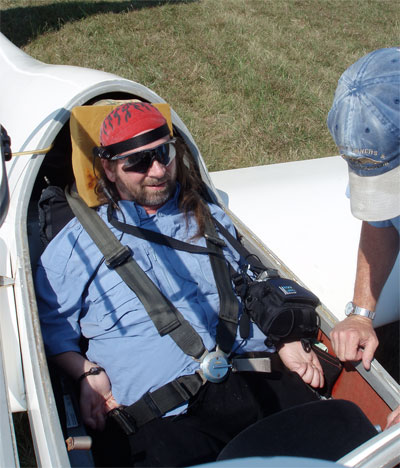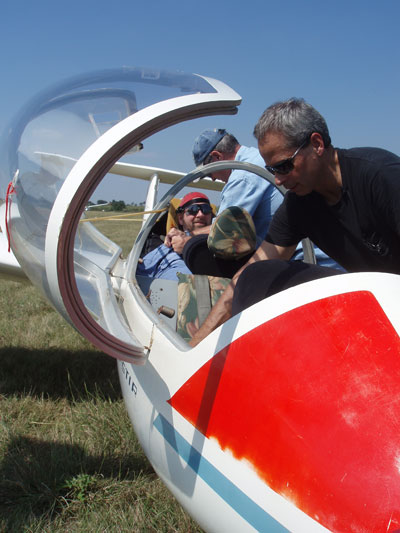My friend John and I went sailplaning with the Fault Line Flyers in Briggs, Texas for a 2nd time. This time I flew in what is known as the Grob (pronounced grobe), pictured above. This is a high performance sailplane. It has perhaps a 30/1 glide ratio, which means for every 30 feet of forward movement it only looses 1 foot of elevation compared to the 233 which I flew the first time has 24/1 glide ratio. In the pictures below, I’m sitting in the cockpit, and Vince is preparing his seat in front of me.


The Grob was not near as comfortable as the 233. I had to recline a lot in the Grob and barely fit under the canopy. The Grob was built better than the 233. It had a solid canopy which formed a tight seal with the fuselage. It took away any sense of “risk”. The 233 had a flimsy canopy and a poor seal. The wind came whipping in the canopy and kept me cool. More importantly, sitting in the front of the 233 I really had a sense of flying.



I wore my Adventure Cam II from Viosport to film our flight. The Viosport camera and my other equipment worked well to capture our experience. I will, however, need more footage from different angles to put together a good video to showcase sailplaning.
A web page on sailplaning wouldn’t be complete without a science lesson. If you ask just about any pilot how a plane can fly, they will most likely tell you, incorrectly, that it is the Bernoulli principle. The truth is it has more to do with Newton’s laws of motion. For a complete authoritative explanation please see A Physical Description of Flight. Just an FYI, the Bernoulli principle can’t explain how a plane can fly upside down.
It is no surprise that many sailplane pilots also enjoy sailboating. After all, the same theory of fluid dynamics is applicable to both sports. A sail is simply an airplane wing turned on its side. For a more concrete example see my Inventure page. For diagrams explaining how a sail works, please see Sailing: From Work To Fun. It is interesting to note that theoretically, a sailboat can actually sail faster than the wind. In reality, this is only demonstrated in ice sailboats. Friction on sailboats often prevent speeds approaching or surpassing that of the wind.

